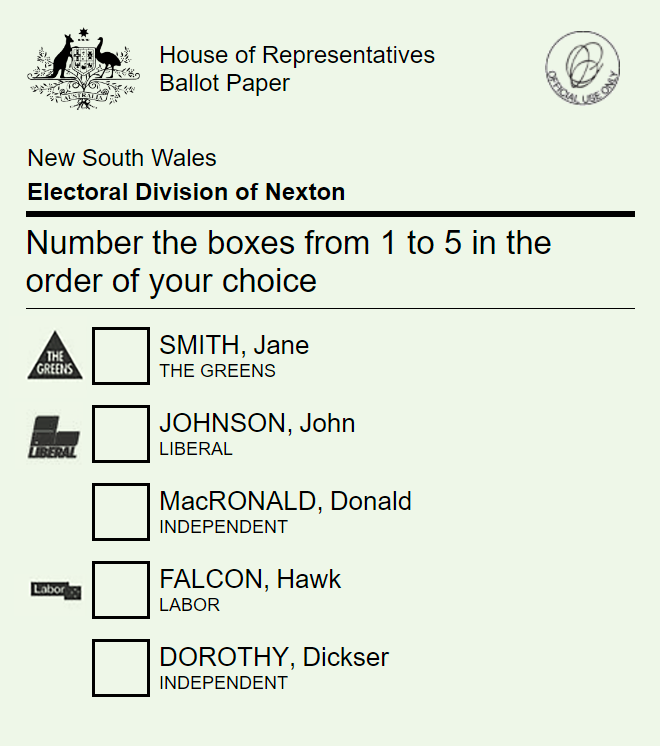This insight should take 10 minutes to read.
What is the difference between a political party, a registered political party, and a parliamentary political party? Each plays vital role in ensuring a vibrant and healthy democracy within Australia, having different responsibilities and benefits available to political parties based on their status.
As we see an increase in the number of political parties participating in our Federal elections, understanding these differences are crucial to understanding the dynamics of our democracy.
Note: This insight specifically focuses on the Federal Parliament and Federal elections. Each State and Territory has their own framework for registering political parties with varied requirements, obligations and benefits.
Insight Contents
Types of Political Parties
Political Party
A political party is a group of individuals that organise to compete in elections and attempt to influence public policy. Political parties typically form around specific beliefs or goals in order to attract specific members and supporters.
Parliamentary Political Party
A parliamentary party is a political party with a Federal MP or Senator as a party member. It does not have to be a registered political party, but it could be.
Registered Political Party
A registered political party is a political party that has been registered on the Electoral Commission's Register of Political Parties. This register identifies the party’s name, abbreviation, logo and responsible officers.
All political parties begin as unregistered political parties with the objective of becoming organised by increasing party membership and contesting elections to win public office. In order for a political party to become a registered political party, it needs to go through a registration process which ensures that the party has:
- a suitable party name
- a suitable abbreviation (optional)
- a suitable logo (optional)
- a written party constitution that sets out the aims of the party
- at least 1,500 party members who are enrolled to vote and not members of any other political party, or at least 1 MP or Senator who is a party member and is not a member of another registered political party
In order for a party name, abbreviation or logo to be suitable, it must not be the same or similar to another registered political party, not contain certain words, and not be inappropriate. There are also words that cannot be exclusively used by a party, such as the recognised name of a geographic area, a word that means a collection of people (e.g, party, community, team), or a function word.
Party Identity & Brand
Any candidate put forward to contest a seat by a registered political party (an endorsed candidate) will have the name of their party name (or abbreviation) and its logo included on the ballot paper next to their name. This enables voters to easily identify the party which the candidate has been nominated by. This assists voters in choosing who to vote for (or not to vote for) and how to preference each candidate.
Once a registered political party has secured its name, abbreviation, and logo, it can object to the use of its brand by any other political party seeking registration. In some cases, this could give a registered political party exclusive use of certain words and an advantage in appealing to certain voter groups, such as those with specific political, economic or ideological beliefs.
For example, say there is a registered political party called Australian Unity. They could object to the registration of another party that wants to register with the name The Unity Party, and likely prevent its registration. The Unity Party would then be required to change its name in order to become a registered political party.
Liberal Party of Australia vs Liberal Democratic Party
On 18 January 2008, an application was submitted by the registered political party Liberty and Democracy Party (LDP) to change its name to the Liberal Democratic Party (LDP), a name which it had been registered as prior to 2006. This change was objected to by the Liberal Party of Australia, another registered political party, on the basis that the name was too similar to its name and may result in voters being confused or mistaking the two parties. The objection failed and the registered party name was changed to the Liberal Democratic Party.
In 2021, the Parliament of Australia passed the Electoral Legislation Amendment (Party Registration Integrity) Act 2021 which prevented political parties registering with a party name that contains a word that is in the name or abbreviation of another registered political party. Upon effect of the new legislation, the Liberal Party, on 9 November 2021, lodged an objection against the Liberal Democratic Party's registered name on the basis that it used the word Liberal. This objection was upheld, resulting in the impending deregistration of the Liberal Democratic Party.
The Liberal Democratic Party contested the deregistration of their party in the Administrative Appeals Tribunal and later the High Court of Australia, ultimately resulting in the deregistration of the party being upheld. The Liberal Democratic Party then undertook the process of changing its name to the Libertarian Party and was successfully registered on 12 January 2024 with its new name, abbreviation, and logo.
Nominating Candidates for an Election
In order for an individual to nominate to contest a lower house seat or the Senate, that individual is first required to obtain the signatures of at least 100 voters enrolled in the seat they are contesting (or the State or Territory in the case of the Senate). While this may not present a significant obstacle for a single candidate, for a group of candidates wishing to run in multiple seats, this can quickly become a burden as they contest more seats. It may also prevent them from being able to make last-minute decisions to contest a seat. Each nomination form must then also be individually lodged with the returning officer for that specific seat where the 100 signatures will be verified. If 100 signatures can not be verified to be of people enrolled to vote in that seat, then the nomination of that individual is invalid.
In contrast, if an individual is nominated as an endorsed candidate of a registered political party, only the party’s registered officer’s signature is needed on the nomination form- not the signature of 100 voters enrolled in that seat. This reduces the barrier to entry for contesting the election and allows registered political parties to nominate last minute candidates near the closing of the nomination period.
Additionally, a registered political party can nominate endorsed candidates the for several lower house seats at the same time in any State or Territory (not just the one it is registered in or has an MP or Senator in). This is known as a bulk nomination and significantly reduces the administrative effort to nominate candidates across an entire State or Territory in an election. All forms can be sent to one central location instead of needing to be sent to the returning officer for each seat across the State or Territory.
Public Funding
Public funding is the distribution of public money to candidates who contested an election to reimburse them for their campaign expenses. Candidates are eligible for public funding if they obtain more than 4% of first preference votes, regardless of whether they are a member of a registered political party. In order for a candidate to obtain any public funding they are entitled to; they must provide proof of having spent money on their campaign.
Candidates which were endorsed by a registered political party and earn enough first preference votes to be eligible for public funding do not receive their public funding themselves; instead, the registered political party receives it.
Unlike independent candidates who need proof of their campaign expenses before receiving any public funding, registered political parties are given an automatic payment and can submit proof of their campaign expenses if they wish to claim further public funding. Public funding rates are indexed and change every six months.
Similarly to bulk nomination, registered political parties can also claim public funding in bulk for several candidates across the State or Territory at a time. This significantly reduces administration expenses and allows the party to claim the maximum public funding it is entitled to.
Public Funding | Rate |
Lower House Vote | $3.346 per vote |
Senate Vote | $3.346 per vote |
Automatic Payment | $12,232 per candidate |
Rates as of 1 July 2024.
Electoral Roll Data
The electoral roll is the list of people enrolled to vote for elections in Australia. Based on their circumstances, MPs, Senators, and registered political parties are allowed access to the voter data on the electoral roll.
Regardless of which party they belong to (if any at all), an elected MP is entitled to the electoral roll for the seat which they represent. Similarly, an elected Senator is entitled to the electoral roll for the State or Territory they represent.
A registered political party can be granted access to the electoral roll for any States and Territories in which it:
- has its official registered address of the party within that State or Territory; or
- has a current federal MP or Senator in that State or Territory; or
- has a registered political party in that State or Territory.
The electoral roll data is updated every month, allowing MPs and registered political parties to keep their voter tracking systems up to date with the latest updates, such as new voters and recently moved voters. MPs will often send an introduction letter to new voters who move into their electorate or become enrolled, with some MPs even sending happy birthday letters to the voter on their birthday.
The practical implementation of these rules
An independent lower house MP is only entitled to the electoral roll for the seat they represent. However, if that independent MP starts their own political party and registers it so that it becomes a registered political party, then their new registered political party can access the electoral roll for the entire State or Territory.
Voter Tracking Systems
Electoral roll data is critical to registered political parties as it is the base data used for their voter tracking systems. A voter tracking system is like a customer relationship management (CRM) system but designed for voters and elections. It allows a political party, its volunteers, its elected officials, and its candidates to access data that has been collected and stored about voters in the system, allowing them to better target voter segments and better understand the electorate.
The electoral roll data provided to MPs and registered political parties contains basic identification information about the voter, such as their personal details and their address. Most political parties in Australia have developed their own voter tracking systems to allow them to gather and collate more data. These voter tracking systems are used in MP and Senator offices to continuously add data to an elector’s record in the system.
When a political party collects a voter’s contact details, they are stored in the voter’s record. If the voter makes their position on a topic or policy known to an MP or candidate, such as through a survey or email, that information is also stored in the voter’s record. When a voter interacts with an MP or their office, that interaction is stored in the voter’s record for future use.
Base Electoral Roll Data | Data Collected by Political Parties |
|
|
The voter tracking systems used by most registered political parties in Australia today are designed so that the information stored in the voter record remains with them in the system at all times. If a voter moves to another electorate or another State or Territory, the collected information will move with them. This allows the party’s MP or candidate in the new seat to better understand that voter and increase the chances of securing their vote.
Data on support or opposition to policies or issues provides registered political parties a rich source of data to analyse to identify trends between political support and demographic and geographic data. More advance analysis will incorporate data from other sources, such as the latest Census, to allow political parties to better understand voter sentiment on both a local level and a broader level.
Parliamentary Parties
A parliamentary party is a political party with a federal MP or Senator as a party member. It does not have to be a registered political party. Similarly, a registered political party may not necessarily be a parliamentary party if it does not have an MP or Senator as a party member.
As the name implies, a parliamentary party is a type of party used within the processes of the Parliament of Australia, and is not regulated or governed outside of Parliament like a registered political party is. A parliamentary party often has an associated registered political party, typically the registered political party they were an endorsed candidate of at their election.
Parliamentary parties organise the MPs and Senators within the Parliament and help determine which parties form Government, which form Opposition, and which are eligible to be deemed minority parties.
As of the time this insight is written, the Parliament of Australia has determined that a minority party shall be any parliamentary party that is not part of the Government or the Opposition and has at least five Members in Parliament (MPs or Senators).
A leader and deputy leader are selected from amongst the members of each parliamentary party for the House of Representatives (if the parliamentary party has MPs) and for the Senate (if the parliamentary party has Senators). Additional leadership positions, such as the whip, are also selected
The parliamentary party leadership is entitled to additional allowances to assist them in fulfilling their additional obligations. These allowances include additional communication allowances, additional office allowances, allowances for travel, and potentially additional staffing entitlements. A parliamentary party that is not a party of Government or of Opposition and does not meet the status of a minority party does not have any additional entitlements.
Each parliamentary party has their own rules and procedures that apply to all members of that party. These rules typically focus on ensuring a cohesive and functional parliamentary party, allowing it to operate effectively within the Parliament in a way most suitable to achieve its desired objectives.
Procedures typically defined in parliamentary party rules
- Selecting or removing the leadership
- Selecting or removing the Ministers or Shadow Ministers
- Forming coalition with other parliamentary parties
- Determining a position on decisions before the house
- Binding all members to a decision or policy
- Changing the parliamentary party rules
- Paying a stipend to the parliamentary party or associated registered political party
- Use of specific software or services
An MP or Senator is able to leave a parliamentary party at any time and for any reason, even if they were elected as an endorsed candidate of the associated registered political party. Upon leaving their parliamentary party, that MP or Senator would sit as an independent until or unless they joined, and were accepted into, another parliamentary party, or possibly formed their own.
Registering a political party is a straightforward but thorough process. Most applications for registration by political parties fail or are rejected for reasons that could have been avoided. The application process takes 4 months, with each rejection costing the political party time, money, and membership confidence.
Nexus Polytech can help you navigate the registration requirements and maximise your chances for a successful application. To benefit from our extensive experience in political party management, contact us to get in touch with one of our experts who can help your party progress to the next stage.



